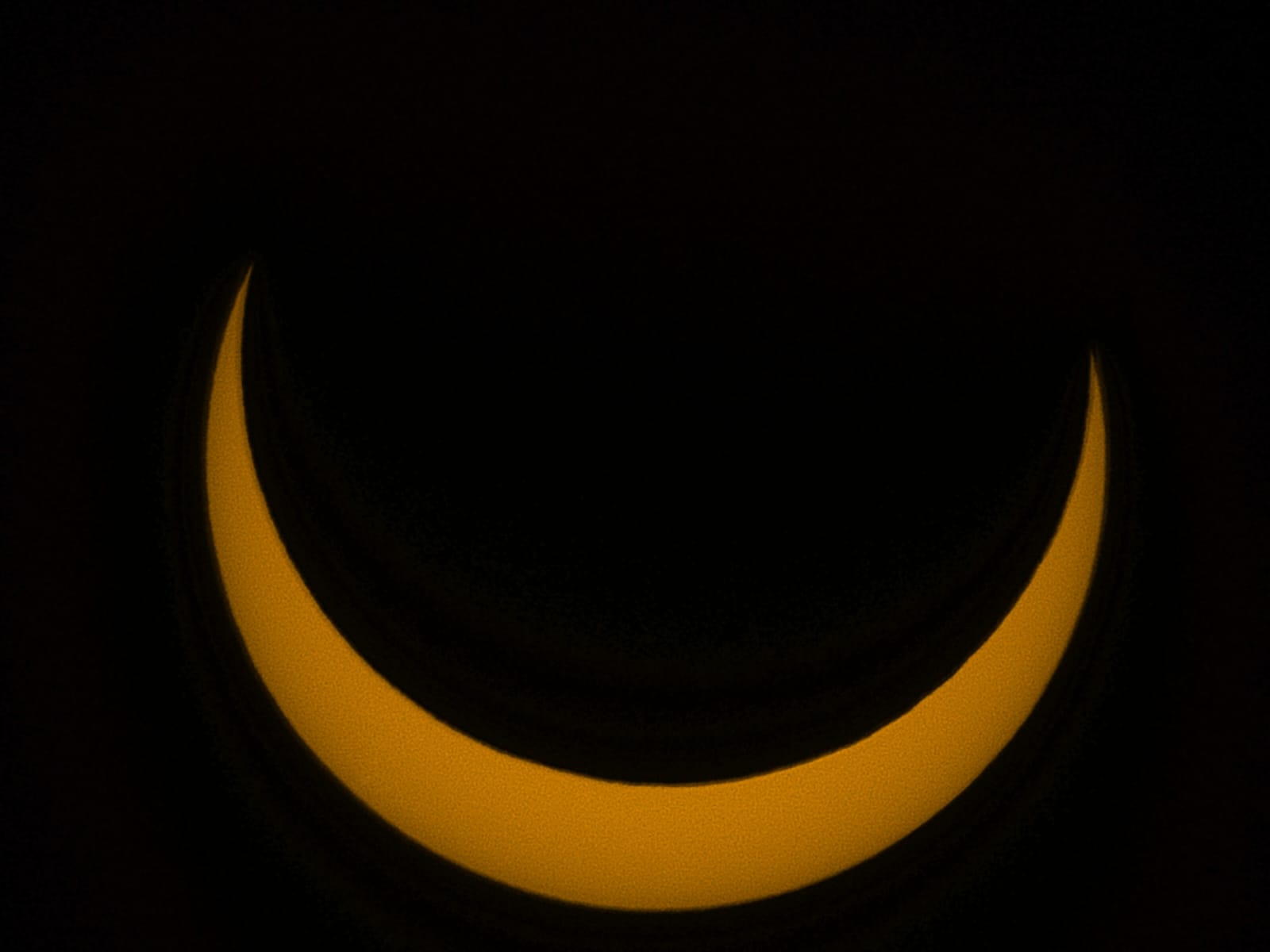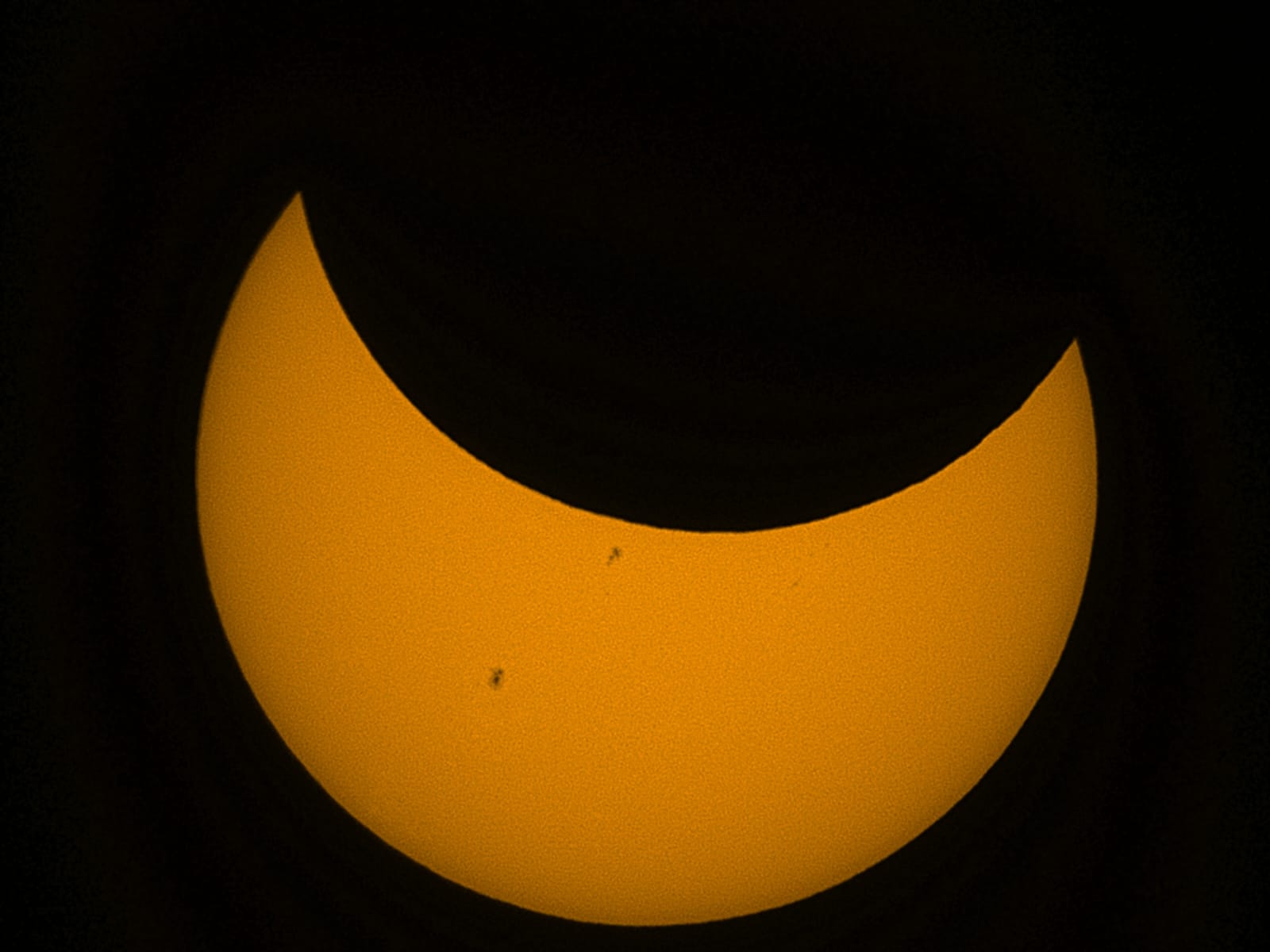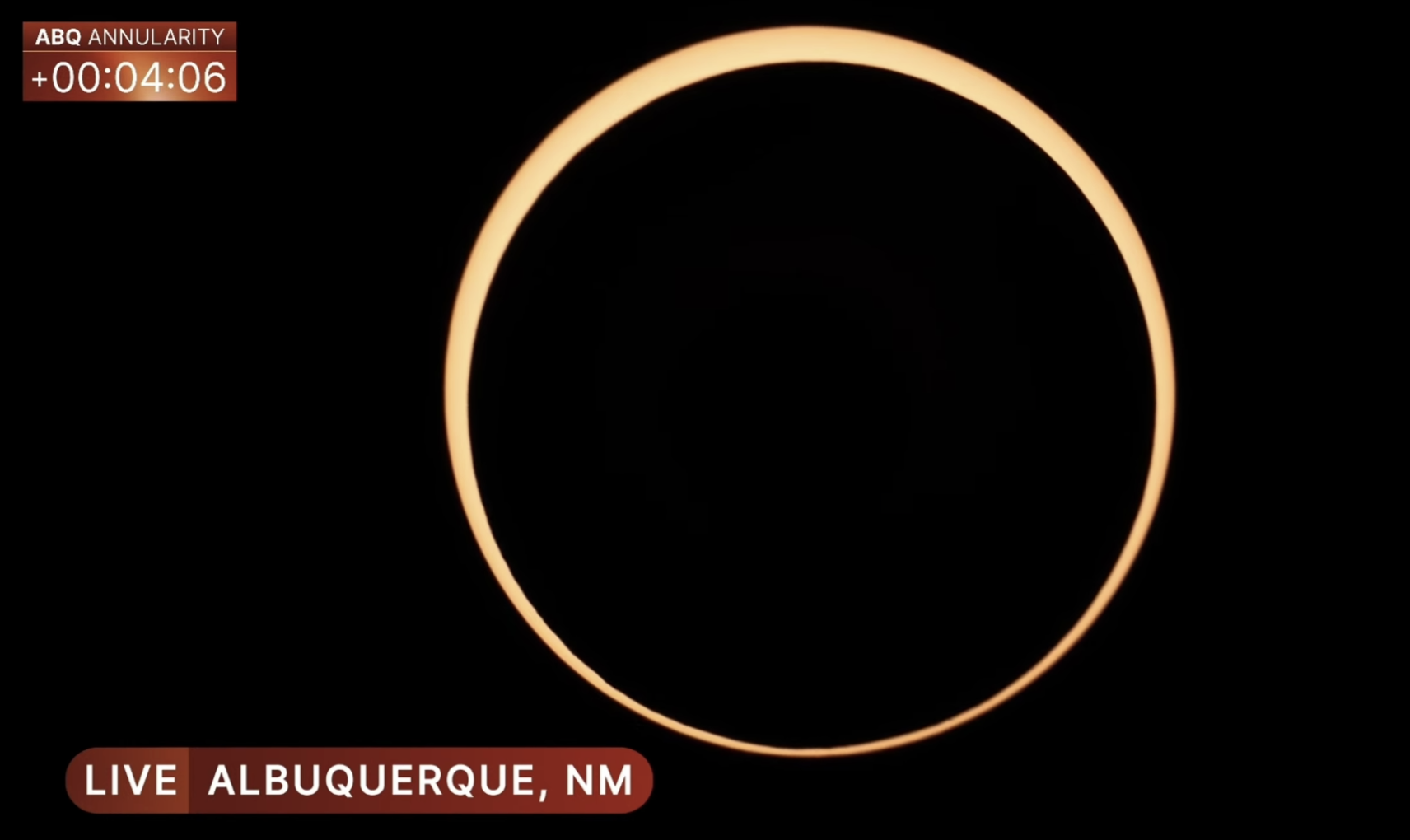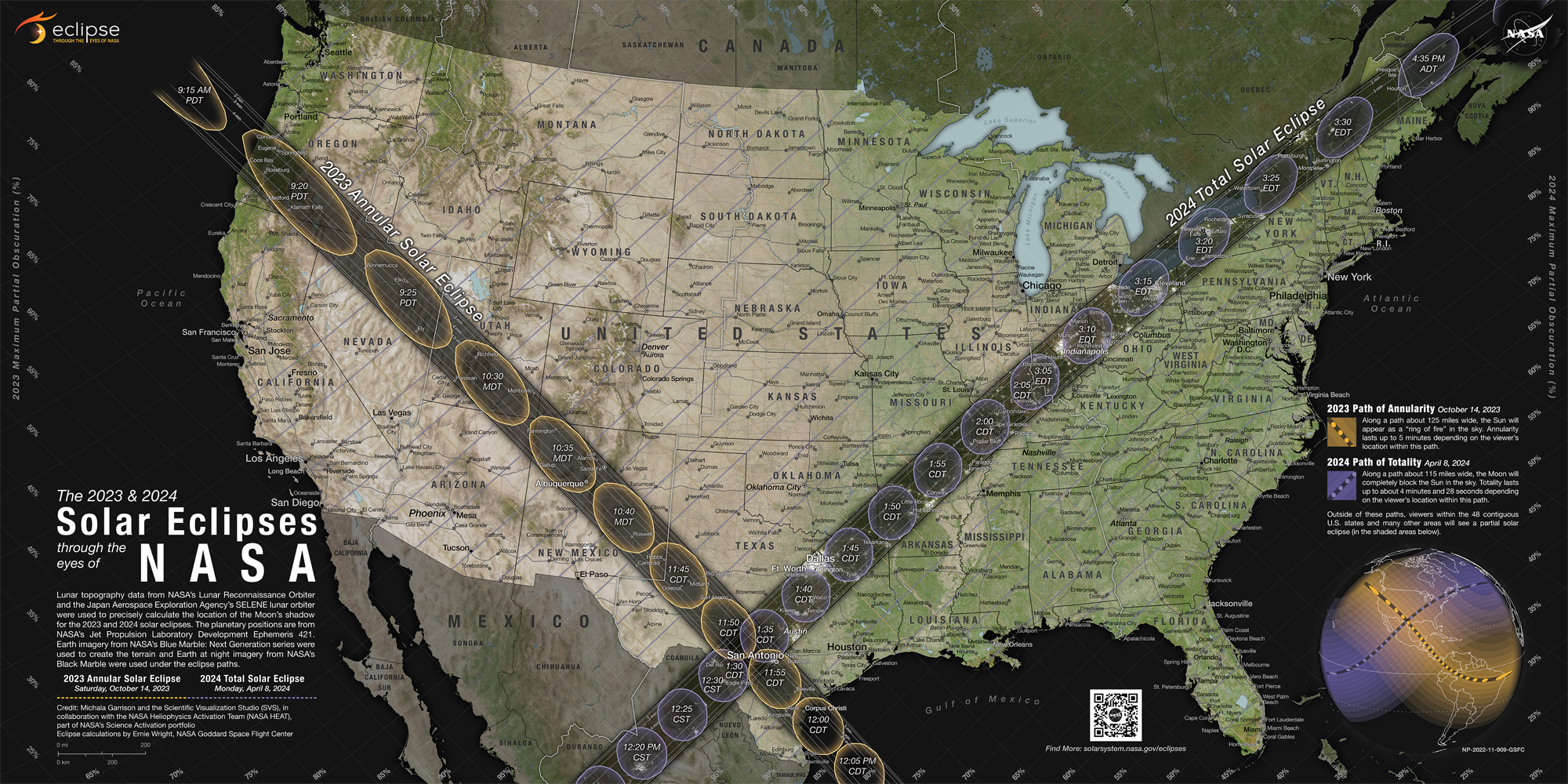The annular solar eclipse of 2023 is underway! See the 1st 'ring of fire' photos and video
"As the clouds begin to part, the crowds here at Great Basin National Park let out audible sighs of relief."
Update for 3:45 p.m. ET: The annular solar eclipse of 2023 has completed its pass over the United States and moved into parts of Central America and South America. Read our wrap to see amazing photos and videos.
The first images of the moon passing between the sun and the Earth in a so-called "ring of fire" solar eclipse are coming in and the views are amazing.
The moon and sun are aligning in what scientists call an "annular solar eclipse," in which the moon doesn't completely cover the sun and leaves a brilliant ring of sunlight visible, giving it a "ring of fire" effect. The solar eclipse will be visible to potentially millions of spectators across several U.S. states from Oregon to Texas, before moving on to Mexico and other parts of Central America and South America, ending in Brazil. You can watch it live online at Space.com, courtesy of NASA.
The partial phase of the solar eclipse began over parts of Oregon at 11:03 a.m. EDT (8:03 a.m. PDT/1603 GMT), with the first "ring of fire" expect expected to begin at 12:13 p.m. EDT (9:13 a.m. PDT/1713 GMT). You can see a full timeline of the Oct. 14 solar eclipse here.
More: Live updates of the Oct. 14 solar eclipse
Related: How long will the annular solar eclipse last on Oct. 14?
Space.com Editor Brett Tingley is observing the solar eclipse from Great Basin National Park in Nevada, where clouds initially threatened to ruin the view.





"As the clouds begin to part, the crowds here at Great Basin National Park let out audible sighs of relief as the sun and the moon emerged back into view some 30 minutes after the eclipse began," Tingley told Space.com from his observing perch arranged by Travel Nevada. He captured stunning views of the partial phase of the eclipse at annularity.
Breaking space news, the latest updates on rocket launches, skywatching events and more!

If you're looking for safe optics to view the eclipse, we recommend the Celestron EclipSmart 2x Power Viewers, which have 2x magnification or this travel-friendly solar telescope. You can also consult our guide to photographing the solar eclipse.
Weather permitting, a partial solar eclipse will be visible across the entire United States, and wide swaths of North America, Central America and South America. But the amazing "ring of fire" effect can only be seen from a slender path of annularity.
That path of annularity is a 125-mile-wide (200 kilometers) track that make landfall in Oregon at 12:13 p.m. EDT (9:13 a.m. PDT/1713 GMT) and then moves southeast across parts of Nevada, Utah, New Mexico, Arizona, Colorado and Texas. It will then move on to Mexico and pass over parts of Guatemala, Belize, Honduras, Nicaragua, Costa Rica, Panama, Colombia and Brazil.
Below is a time chart for the solar eclipse.
| Location | Local time of 'ring of fire' | Duration of 'ring of fire' |
|---|---|---|
| Oregon Dunes, Oregon | 9:15 a.m. PDT | 4 minutes, 29 seconds |
| Crater Lake National Park, Oregon | 9:17 a.m. PDT | 4 minutes, 19 seconds |
| Great Basin National Park, Nevada | 9:24 a.m. PDT | 3 minutes, 46 seconds |
| Bryce Canyon National Park, Utah | 10:27 a.m. MDT | 2 minutes, 31 seconds |
| Canyonlands National Park, Utah | 10:29 a.m. MDT | 2 minutes, 24 seconds |
| Mesa Verde National Park, Colorado | 10:31 a.m. MDT | 2 minutes, 57 seconds |
| Albuquerque, New Mexico | 10:34 a.m. MDT | 4 minutes, 42 seconds |
| Corpus Christi, Texas | 11:55 a.m. CDT | 4 minutes, 52 seconds |
| Edzná Maya archaeological site, Yucatán Peninsula, Mexico | 11:23 a.m. CST | 4 minutes, 32 seconds |
#solareclipse in Boise. #Eclipse2023 pic.twitter.com/pvOb4esoUXOctober 14, 2023
Stockton, California 9:15-9:20 AM #SolarEclipse #CAwx #WxTwitter pic.twitter.com/GefhtE3TrZOctober 14, 2023
NASA and scientists across the United States, and around the world, are studying the eclipse in immense detail. In New Mexico, NASA is launching a series of sounding rockets and balloon experiment to study the eclipse, and has called on the public to help as part of a citizen science project.
"It's a big day for NASA scientists, because eclipses present unique opportunities to study the sun," NASA Administrator Bill Nelson said in a video as part of the agency's live broadcast. "And what we learn from these eclipses, along with our heliophysics research, has incredible benefits for our human exploration...Without its energy, we couldn't exist here on Earth. Just think - it influences everything."
IMPORTANNT NOTE: REMEMBER to NEVER look directly at the sun. You need to use solar filters to safely view the annular solar eclipse to avoid severe eye damage. Naked-eye observers will need to wear solar eclipse glasses, and if you are using cameras, telescopes or binoculars, they must have protective solar filters placed in front of their lenses at all times. Our how to observe the sun safely guide tells you everything you need to know about safe solar observations.
Today's solar eclipse is the last eclipse of the sun of 2023, but also serves as a preview for an even more amazing event: the total solar eclipse of April 8, 2024.
If you capture a photo of the annular eclipse and would like to share it with Space.com's readers, send your photo(s), comments, and your name and location to spacephotos@space.com.

Tariq is the award-winning Editor-in-Chief of Space.com and joined the team in 2001. He covers human spaceflight, as well as skywatching and entertainment. He became Space.com's Editor-in-Chief in 2019. Before joining Space.com, Tariq was a staff reporter for The Los Angeles Times covering education and city beats in La Habra, Fullerton and Huntington Beach. He's a recipient of the 2022 Harry Kolcum Award for excellence in space reporting and the 2025 Space Pioneer Award from the National Space Society. He is an Eagle Scout and Space Camp alum with journalism degrees from the USC and NYU. You can find Tariq at Space.com and as the co-host to the This Week In Space podcast on the TWiT network. To see his latest project, you can follow Tariq on Twitter @tariqjmalik.



